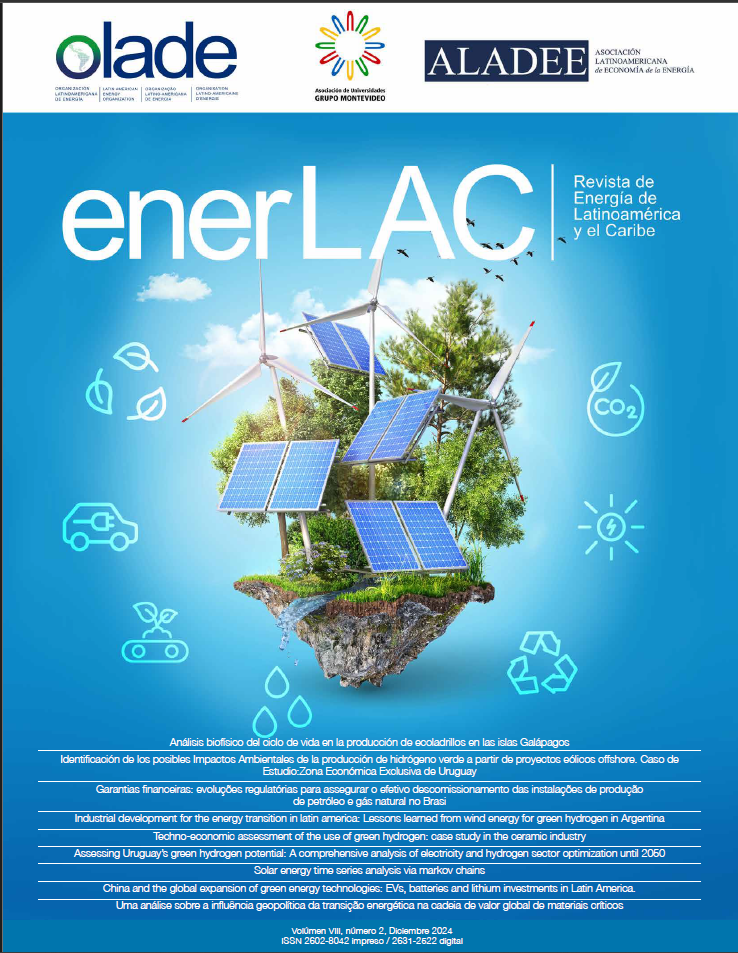TECHNO-ECONOMIC ASSESSMENT OF THE USE OF GREEN HYDROGEN: CASE STUDY IN THE CERAMIC INDUSTRY
Contenido principal del artículo
Resumen
The ceramic industry in Brazil consumes significant volumes of natural gas, usually for attending to processes that require high temperatures. Thus, the use of low-carbon H2 becomes a potential alternative to be introduced into the sector's energy matrix, under a self-generation and self-consumption modality, in order to partially replace the consumption of natural gas in a specific process. Technical-economic modeling is carried out, using the H2V-IEPUC tool, on a case study conducted in partnership with the company Delta Porcelanato. The scale of production and use of H2 were estimated based on international projects and taking as a reference industrial processes currently implemented at a factory. The feasibility of the green hydrogen project is demonstrated by carrying out a sensitivity analysis with technical and economic variables, in addition to presenting a deterministic feasibility scenario. The understanding of the case study contributes to industry subsectors by shedding light on the advantages and barriers related to the incorporation of low-carbon H2 in operations, contributing to the construction of projects that are environmentally and economically sustainable.
Detalles del artículo

Esta obra está bajo una licencia internacional Creative Commons Atribución-NoComercial-SinDerivadas 4.0.




